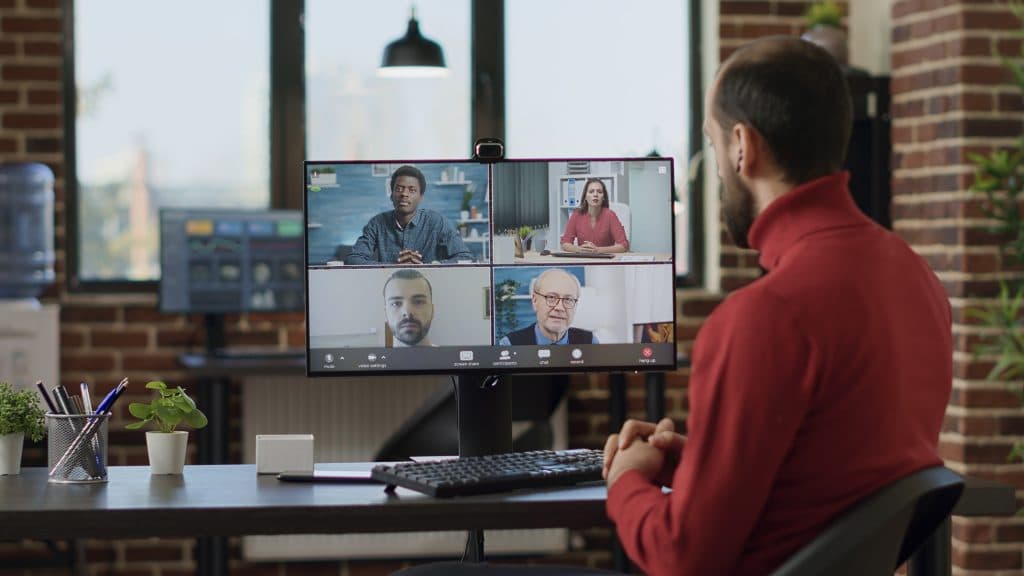Web Design and Development: Definitions and Differences
Explore the distinctions between web design and development in our guide. Learn about the roles of web designers and web developers.
Web design and development have evolved since the inception of websites. Initially, creating websites was straightforward, but today, it encompasses various roles and skills, making the landscape more intricate.
To understand the journey from the first website in 1991 to today’s intricate platforms, one must recognize the depth of roles involved. This overview offers insight into these roles, how they intertwine, and the skills required.
What is web design and development?
Web design and development is a term describing the process of generating a website. There are two central facets: design, which shapes its appearance, and development, determining its functionality. Though sometimes these roles blur, as the digital world advances, their nuances become even more specialized. Over time, many job titles have appeared to depict the myriad of skills in this domain, which can vary across businesses.
Type of Web Development
To keep it simple, lets divide web development into 2 categories: what the users see and what the user don’t see
1) What Users See (Front-end)
Design defines the website’s visual appearances like colors, structure, typography, and imagery. Tools such as Photoshop, Illustrator, and Sketch are commonly used.
Front-End Development is about bringing design to life. Using HTML, CSS, and JavaScript, developers enable user interaction with various website elements. such as buttons, images, text, contact forms, and navigation menus. It’s essential for responsive designs.
Certain individuals in the field of web design and development wear multiple hats, where some designers also engage in coding tasks, while certain front-end developers participate in design aspects. Conversely, some designers stay clear of any coding involvement, while some front-end developers exclusively focus on coding.
2) What Users Do Not See (Back-end)
A website relies on a backend system to manage and structure the data received from the frontend. For example, when a user makes a purchase or completes a form, they input information through a front-end application. This data is then stored in a server-based database.
The seamless functioning of a website is a result of continuous communication between its frontend and backend components. In this analogy, a back-end developer plays the role of a conductor, ensuring that applications, databases, and servers collaborate harmoniously. They achieve this coordination using programming languages such as PHP, Python, etc.
Elements of Web Design
In his essay titled “The Politics of Design,” the renowned designer Paul Rand articulated that “Design is a problem-solving endeavor, offering a means to clarify, synthesize, and emphasize a word, an image, a product, or an event.”
For web designers, the constant objective is to resolve issues for their users. Websites should facilitate users in effortlessly navigating to their desired destinations and accomplishing their objectives. A frustrated user is unlikely to remain engaged with a website, let alone return.
This underscores the purpose of every web design element—to enhance the website’s usability to the maximum extent possible. The goal is to encourage people to visit the site repeatedly and engage with it consistently.
- Layout: Refers to the positioning of website components such as headers, footers, content, and images. The layout should align with the website’s purpose and the desired user experience.
- Visual Hierarchy: It’s essential for users to identify critical information quickly. Elements like size, color, and spacing are adjusted to ensure some information stands out more than others.
- Navigation: Effective navigation means users can effortlessly find what they seek, using tools like menus and search bars.
- Color: Colors not only enhance aesthetics but also guide user actions. Consistency in color choice is crucial for a harmonious design.
- Graphics: These are the visual elements, such as logos and images, that complement the site’s overall look.
- Speed: Loading speed is vital. As per a 2017 Akamai report, optimal loading times range from 1.8 to 2.7 seconds. Delays can drastically increase the likelihood of users leaving a site.
- Accessibility: A site’s inclusiveness determines its user base. Prioritizing accessibility ensures that everyone, irrespective of their abilities, can access and use the website equally.
Both web designers and web developers are indispensable for constructing and maintaining websites, with their roles interconnected. The fundamental distinction lies in developers’ emphasis on technical aspects, like programming and coding, while designers focus on the visual and conceptual elements essential for ensuring an optimal user experience (UX) and user interface (UI).
Difference Between Web Design and Development
Let’s take a look at disparities between web design and web development:
While web designers primarily concentrate on aesthetics and user experience, developers prioritize functionality and structure in web development.
Web designers originate the website’s concept and appearance, creating a visual and user experience (UX/UI) mockup. Web developers evaluate the concept’s financial and technical viability, then proceed to program and code the site. Technical proficiency is crucial for web developers, encompassing complex programming languages and frameworks. In contrast, web designers emphasize the visual and creative facets of a website, with less emphasis on technicalities.
Web developers encompass various specializations, such as front-end, back-end, and full-stack developers, whereas web designers are typically categorized as UX, UI, or visual designers.
Tools utilized by web developers include coding libraries, frameworks, version control systems like GitHub, issue tracking platforms like Jira, hosting control panels, FTP clients, and content management systems (CMSs). On the other hand, web designers frequently employ design software like Photoshop, CMS platforms such as WordPress, website builders like Elementor, in addition to wireframing and prototyping tools.
Conclusion
In the grand scheme, the synergy of website design and development is pivotal for establishing a thriving online presence. Web design primarily deals with the website’s visible aspect, catering to what users perceive, whereas web development concentrates on constructing the site’s backbone and managing the backend.
8Seneca is an exceptional IT outsourcing firm that provides outstanding web design and development services to our partners. With a team packed with IT professionals to solve complicated business issues, 8seneca guarantees to bring efficient and outstanding quality services to its clients worldwide. You can contact us here.
Related Articles

Jul 22, 2025
Read more
The Cost of Hiring the Wrong Developer (and How to Avoid It)
A bad developer hire can cost you time, money, and trust. Here's how to spot red flags early—and avoid hiring the wrong developer.

Jul 16, 2025
Read more
How to Hire Remote Developers: Your Ultimate Guide
Hire remote developers with ease. Find where to locate top remote developers and vet them right in this guide.

Jul 14, 2025
Read more
CASE STUDY: Making Digital Screens Work Together Perfectly
8Seneca fixed Android display synchronization for a retail client with a simple, effective solution. Download the full case study.

Jul 08, 2025
Read more
Python for Business: How It Saves You Money and Time
Save money & time with Python development for your business. Learn how efficient Python software helps companies grow faster.

Jun 30, 2025
Read more
Digital Transformation for Business: What You Need to Know
Mastering digital transformation for your business. Get clear steps for tech adoption, growth, and a secure future.

Jun 25, 2025
Read more
The Ultimate Guide to Hiring Remote Developers for Your Tech Team.
Learn to hire remote developers successfully. Discover benefits, overcome challenges, and find top global tech talent with 8Seneca's guide.
